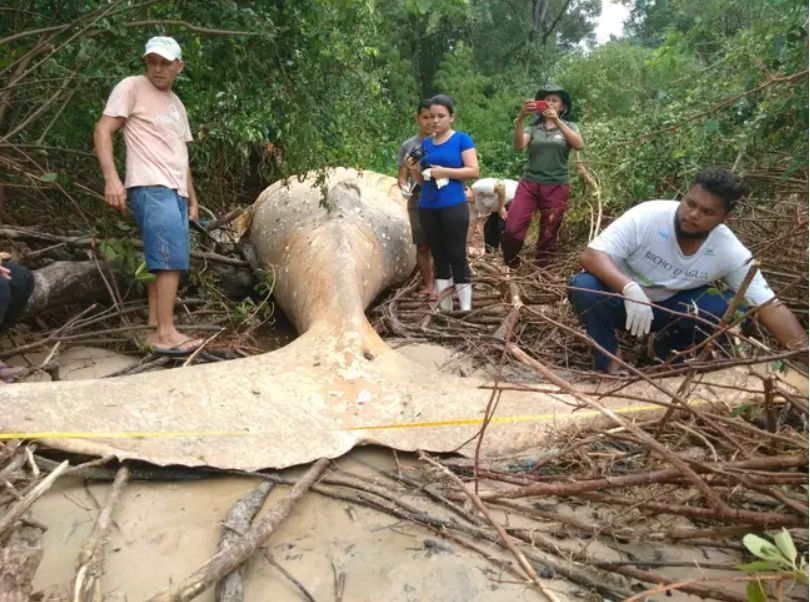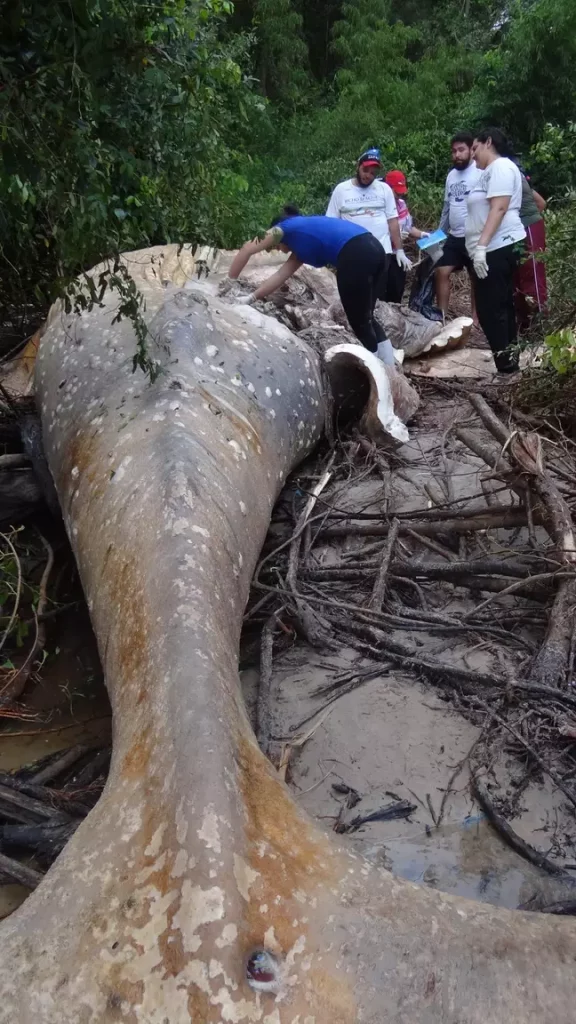Mystery Of Humpback whale That Was Found Dead in Amazon Jungle and No One Knows How it Got There

A peculiar incident occurred when a dead humpback whale, measuring 36 feet and weighing 10 tonnes, was found in a woodland area of Brazil, situated approximately 50 feet from the sea. The discovery of the whale so far from its natural habitat has left many puzzled, as no concrete explanation has been found yet.
Though there have been theories put forward, none have been substantiated. It is indeed an unusual situation, as a dead whale would not be able to navigate itself out of the sea and into the woods.

In February 2019, a humpback whale was discovered on Araruna Beach, located on the island of Marajo where the Amazon river meets the sea. The whale was found in the undergrowth, leading scientists to believe that rough seas and high tides had thrown the creature out of the water and up onto the island.
A team of specialists from the NGO Bicho D’Agua Institute visited the site to investigate the cause of the whale’s death. Although the animal is believed to be a 12-month-old calf, it is still unknown how it died or how it ended up in the mangroves.
The team suggested on their Facebook page that the whale may have become tangled in the mangroves after being washed ashore. While the Maritime Herald newspaper speculated that the whale may have died from ingesting plastic in the ocean, it is widely believed that the creature was already deceased before washing ashore.

According to Dirlene Silva from SEMMA, the Brazilian department for environmental, health, and sanitation, scavenging birds led to the discovery of a stranded humpback whale. The whale’s carcass was hidden in the bushes, far from the sea. Renata Emin, the president of Bicho D’Agua and a marine specialist, stated that they are unsure about how the whale ended up there.
However, they speculate that the tide carried it inland due to its proximity to the shore. This unusual occurrence has left experts puzzled as humpback whales are not usually found on the north coast of Brazil in February.
They typically migrate to Antarctica after being in the Bahia area between August and November. Emin suggests that the whale may have been a calf traveling with its mother and got separated during the migratory cycle between the two continents.




